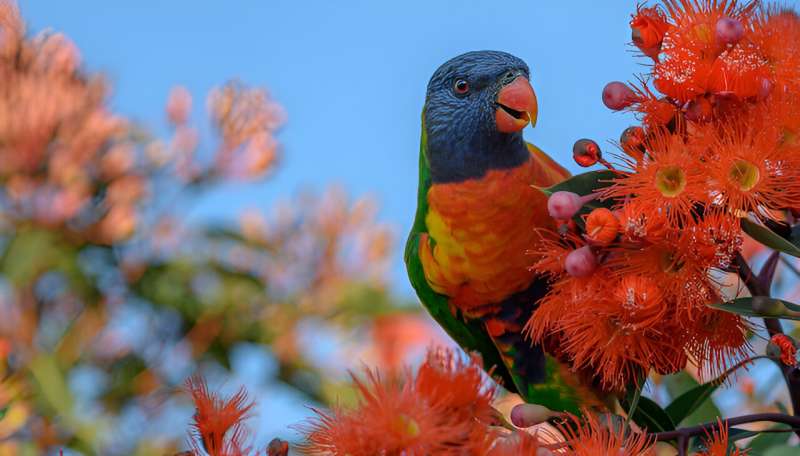This article has been reviewed according to Science X's editorial process and policies. Editors have highlighted the following attributes while ensuring the content's credibility:
fact-checked
trusted source
proofread
Why you should count your chickens (and kookaburras, lorikeets or other backyard birds)

This year is the tenth annual Aussie Backyard Bird Count, which Professor Simon Griffith says highlights the important role citizen science projects play in our understanding of changes taking place in our world.
The project is Australia's largest single citizen science event, with organizers BirdLife Australia inviting people across the country to spend 20 minutes in their backyard, local park or on their balcony noting down the birds they see.
Last year, more than 77,000 people submitted a checklist of the birds they spotted, a huge increase from the 9,000 or so collected when it began in 2014.
"I've definitely used some of the data collected in the Backyard Bird Count in my own research, because it gets fed into a number of big, important data collections, like the Atlas of Living Australia, and the eBird project out of Cornell University," says Macquarie University ecologist Professor Simon Griffith.
"Citizen science is sometimes be the only way we can afford to fund this kind of important data collection work."
The Australian project has a long way to go to rival the world's longest continuous wild bird monitoring program, Oxford University's 77-year old Great Tit study in Wytham Woods, where Professor Griffith worked for over four years.
"The reality is you need many years of data to start exploring those long-term patterns, in particular to recognize the sorts of major trends that operate on different time scales such as climate change," Professor Griffith says.
Smaller birds on the decline
Although a decade is a relatively short time in which to assess environmental shifts, Professor Griffith says our global biodiversity crisis is so significant that changes are already evident in Bird Count patterns.
One trend emerging is the surge of some bird populations at the expense of others over the past decade, he says, with changes to bird communities shaped by the plants in our backyards.
Birds like the territorial noisy miner thrive on grevilleas that have been bred in nurseries to have larger flowers—and therefore increased nectar.
This urban 'nectar buffet' is nothing to crow about—it attracts aggressive nectar-feeders like Noisy Miners, Rainbow Lorikeets and Eastern Rosellas.
"As particular plants disappear, birds relying on them leave too," said Professor Griffith, adding that aggressive urban adapters can also drive out less adapted species.
"We're seeing a diminishing number of small birds in urban areas," he says, attributing the decline to the growing prevalence of larger native birds like magpies, noisy miners and rainbow lorikeets.
"These aggressive birds are doing extremely well in our cities—and they're the ones chasing some of the smaller birds out," says Professor Griffith, adding that some native birds adapt to urban environments and learn behaviors that give them a competitive edge.
"Cockatoos getting into bins and even lunch-boxes have learned to get around deterrents, becoming even more successful living in cities that provide food," Professor Griffith says. "It shows how smart and innovative these birds are."
Kookaburra numbers dwindle
While some native birds are thriving, others—such as previously common kookaburras—are on the decline, likely due to a combination of factors.
"Climate effects are starting to bite," Professor Griffith says.
"The world is increasingly becoming a more challenging place with far more extreme events, and we don't know how much each factor is contributing."
Other issues include the widespread use of rat poison in urban areas, causing serious harm or death to kookaburras eating poisoned rodents, while heavy use of insecticides in urban areas has reduced many insects which were previously a prime food source for many birds.
"Old, dead trees which might have hollows often get removed from urban areas for safety and to look nice, reducing potential nesting spots," Professor Griffith says.
The Aussie Bird Count is on until October 22, 2023.
More information: Count: aussiebirdcount.org.au/
Provided by Macquarie University




















